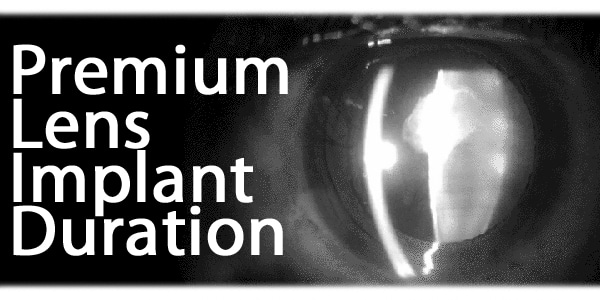Will My Prescription Keep Changing After A Premium Lens Implant?
Knowing how often people need updated prescriptions, it is an understandable question to wonder why a premium lens implant would maintain good vision for the rest of your life. First, let’s understand how the human eye changes.
The human eye goes through many changes as we age and grow. A baby is born with an eye only about 80% of the size it will be in adulthood. As eyes become larger in infancy and early childhood, a refractive error will become stronger, requiring frequent changes in prescription.
Eyes will traditionally finish growing once we have reached a certain age, usually between the ages of 18 and 21. That is why the majority of people have fewer changes in prescription once they reach their twenties. Slight variations are common, depending on the health of the eyes. That is why it is important to come in and have the eyes routinely checked for any problems.
Why Does My Vision Change More After 40?
After the milestone of age 40, you may notice it becomes harder to focus up close. Your eyes are not growing anymore so what is causing the change this time?
The change is due to hardening of your crystalline lens. This lens sits inside the front of the eye, right behind your iris, the circular membrane that determines your eye color. Your lens is naturally flexible so it will change shape to adjust to focal distance, allowing you to see objects up close. Due to natural aging of your body, this flexibility will slowly lessen over time, resulting in a rigid structure that is not conducive to near vision.
Once hard, the cells of this lens will build up over time and turn your once transparent lens into a cloudy, more translucent cataract. Consider how seeing through a clear window is different from seeing through frosted glass. Your vision with a cataract is very similar.
Why Does A Premium Lens Implant Not Change Over Time?
 When a cataract is removed, your natural lens is separated into small pieces and removed. In order for the eyes to function properly again and send light to the right location on the retina, a new lens must be implanted as a replacement. These man-made lenses are created from materials such as acrylic or silicone that do not break down over time like natural tissue. They will often outlast a patient’s lifetime.
When a cataract is removed, your natural lens is separated into small pieces and removed. In order for the eyes to function properly again and send light to the right location on the retina, a new lens must be implanted as a replacement. These man-made lenses are created from materials such as acrylic or silicone that do not break down over time like natural tissue. They will often outlast a patient’s lifetime.
Measurements taken during your pre-operative visit give your surgeon the numbers they need to try and best determine what strength of lens to choose for your vision. Sometimes a patient may decide to invest in a premium lens implant. These lenses are designed to correct refractive errors both distant and near, lessening an individual’s reliance on corrective glasses or contacts. As they do not break down over time or require replacement, the ideal prescription will be maintained continually. If the lens chosen does not result in the best vision possible, enhancements via Lasik or PRK may be discussed a few months post-surgery.
After cataract surgery, if a patient were to develop other ophthalmic problems, such as macular degeneration, retinal detachment, or severe dry eyes, vision can deteriorate or become cloudy due to these issues. It is important to review your medical history and information with your surgeon to make the best decision for your eyes and individual procedure.
